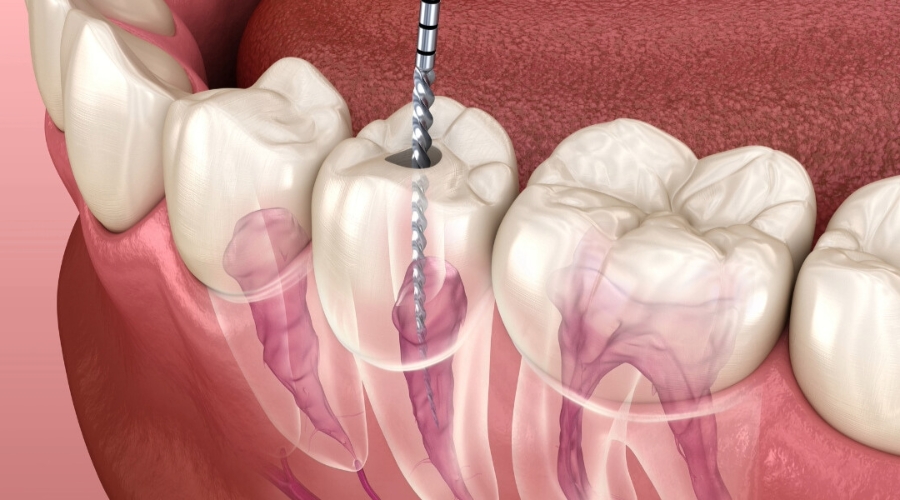Picture this: a toothache that seems to linger, intermittent throbbing, and heightened sensitivity. These are often precursors to a root canal infection silently brewing within. Root canal infections, though concealed beneath layers of enamel, manifest through unmistakable signals. The human tooth, a marvel of nature’s design, is not immune to microbial invasion. This blog endeavors to shed light on the vital signs of root canal infections that should not be dismissed lightly.
The Stealthy Onset
Root canal infections are like silent intruders, creeping into the intricate passages of the tooth’s interior. More often than not, their onset is discreet, marked by subtle yet persistent signals. One of the primary indicators is a persistent toothache that surpasses the typical sensitivity after consuming hot or cold beverages. This pain may escalate from a dull ache to a sharp, throbbing discomfort, signifying an underlying issue.
Sensitivity Amplified
An uptick in tooth sensitivity can be a telling sign of an impending root canal infection. If you find yourself wincing at the mere thought of sipping a hot cup of tea or cringing when a burst of cold air grazes your teeth, it’s time to take heed. Sensitivity that extends beyond the norm is indicative of an underlying issue within the tooth’s pulp, the soft tissue at the core of the tooth.
The Swelling Dilemma
Swelling around the affected tooth or in the surrounding gums is a visible manifestation of the body’s response to infection. Inflammation is a natural defense mechanism, and in the context of root canal infections, it signifies the body’s attempt to contain the spread of the infection. This swelling can present as a tender, bulging area around the infected tooth or as a more generalized puffiness in the adjacent gums.
A Closer Look at Discoloration
As the infection progresses, it can impart a distinct hue to the affected tooth. Discoloration, often taking on a grayish or darkened appearance, is a result of the infection compromising the blood vessels within the pulp. This visual cue is an unmistakable sign that the health of the tooth is compromised, necessitating intervention.
Understanding the Root Canal Process
A root canal is a dental procedure aimed at treating infections within the pulp of a tooth. The pulp, housing nerves, blood vessels, and connective tissues can become a breeding ground for bacteria when compromised. During a root canal, the infected pulp is removed, and the interior of the tooth is thoroughly cleaned and disinfected. Following this, the void is filled with a material to prevent future infections. Contrary to common misconceptions, a root canal is not a painful procedure; rather, it alleviates the intense pain associated with an untreated root canal infection.
The Importance of Timely Intervention
Preventing Abscess Formation
An abscess is a collection of pus that forms at the root of a tooth, typically as a result of untreated infection. If left unattended, the infection can spread to surrounding tissues and even enter the bloodstream, triggering systemic health issues. Timely root canal intervention effectively halts this progression, preventing the formation of abscesses and curbing the associated risks.
Avoiding Unnecessary Extractions
Tooth extraction, while sometimes unavoidable, should be considered a last resort. Timely root canal treatment provides an opportunity to circumvent the need for extraction. Preserving natural teeth is paramount, as it maintains the harmonious interplay of your teeth and ensures the stability of your bite.
Preserving Tooth Integrity
Losing a tooth extends beyond aesthetic concerns and impacts functionality, speech, and the alignment of adjacent teeth. Timely root canal treatment not only halts the infection but also allows for the preservation of the natural tooth, mitigating the domino effect of challenges that can follow tooth loss.
Safeguarding Against Bone Loss
Untreated root canal infections can lead to a gradual breakdown of the jawbone surrounding the affected tooth. A root canal procedure, conducted in a timely manner, arrests the infection’s advance, preserving the surrounding bone and maintaining the overall stability of your oral architecture.
The subtle cues of persistent toothaches, heightened sensitivity, swelling, and discoloration are not to be dismissed lightly. They are the whispers of a deeper issue that, when ignored, can reverberate into more severe complications. Understanding the urgency of these signals and embracing timely intervention is the key to preserving not just a tooth but the holistic well-being of your oral cavity. Root canal procedures, far from being daunting, are a testament to modern dentistry’s ability to restore and heal. As we navigate the labyrinth of dental health, let us be attuned to the vital signs that beckon us to action. In doing so, we safeguard not just our smiles but the longevity and vitality of our teeth.




